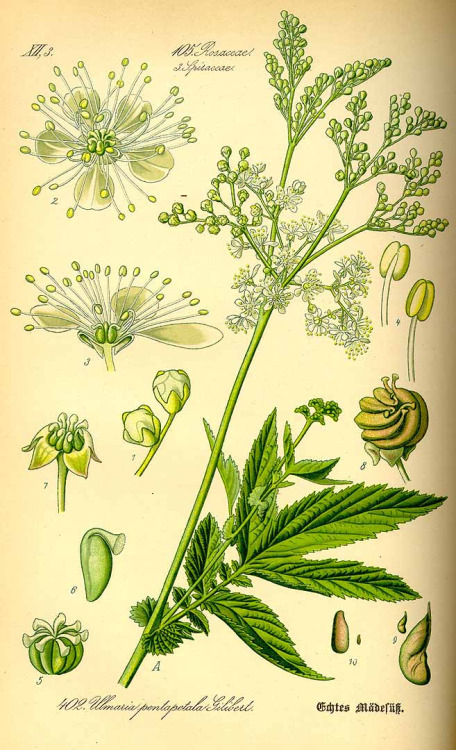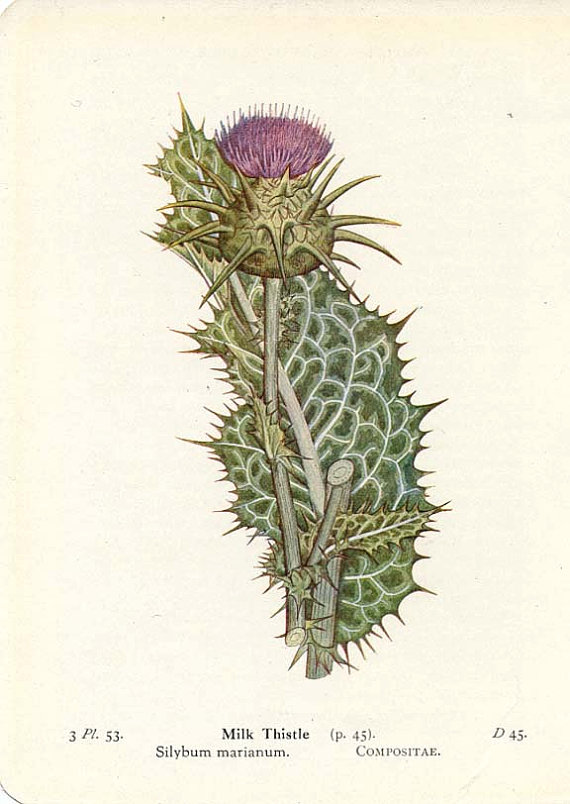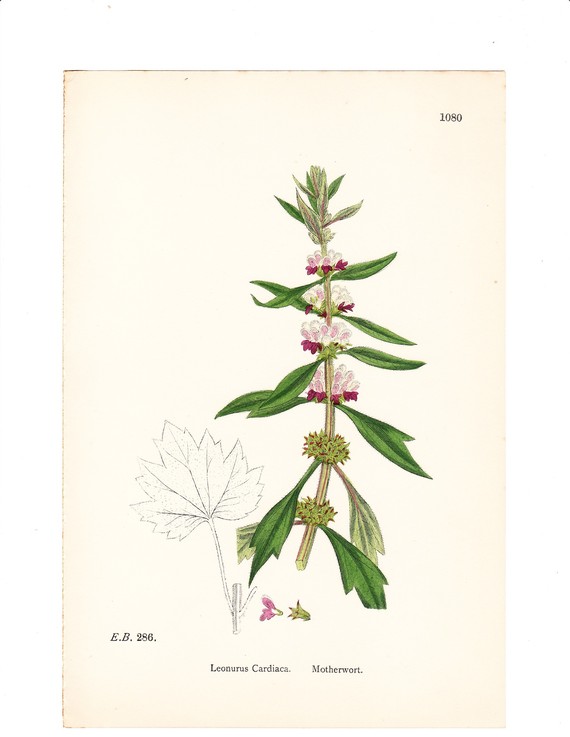Dr Clare Materia Medica
Introduction to the Dispensing of Dr Clare’s Blended Herbs
Special | A | B | C | D | E | F | G | H | I | J | K | L | M | N | O | P | Q | R | S | T | U | V | W | X | Y | Z | ALL
M |
|---|
Meadowsweet Filipendula
Scientific Name: Filipendula ulmaria, Filipendula spiraea. Family: Rosaceae. Parts used: Flowers, stems, leaves. Traditional use. Meadowsweet is used for colds, bronchitis, dyspepsia, heartburn, peptic ulcer disease, and rheumatic disorders including gout. It is also used as a diuretic and urinary antiseptic for acute cystitis.
Safety. There are no safety concerns when used appropriately. (4) One case report on the use of a blend of herbs including meadowsweet has been reported in a child presenting with bleeding from the upper digestive system.(15) As tannins precipitate proteins it is suggested that it is taken between meals if you have a low protein diet. This also applies to tea, red wine and dark chocolate. I have not witnessed any such concerns in clinical practice. Theoretically salicylates may be associated with Reyes syndrome although no cases have been reported with meadowsweet.
Breastfeeding; Consult a medical herbalist.
Constituents. Volatile oils containing salicylaldehyde, ethylsalicylate, methylsalicylate, methoxybenzaldehyde and others. Phenolic glycosides; spirein, monotropitin (gaultherin), these are the primeverosides of salicyl aldehyde and methyl methyl salicylate.; also isosalicin. Flavonoids; spiraeoside, rutin, quercitin, hyperoside, avicularin. Tannins (polyphenols); mainly hydrolysable tannins. Miscellaneous; phenylcarboxylic acids, traces of coumarin, ascorbic acid (vitamin C). Scientific evidence. No clinical studies have been done. Mechanism of action. Meadowsweet has stomachic, mild urinary antiseptic, diuretic, anti-rheumatic, astringent, and antacid activities.(1) In laboratory studies meadowsweet demonstrates anti-inflammatory effects on pro-inflammatory mediators (cytokines) and on scavenger cells.([1],7,8) Meadowsweet is a rich source of anti-oxidants.(14)It contains tannins and salicin, a plant salicylate. (2,4) In animals, meadowsweet decreases motor activity, lowers temperature, induces muscle relaxation, and increases the effect of codeine related pain relieving substances. (1) In animals the flower extract increases life expectancy, decreases vascular permeability, increases bronchial, intestinal, and uterine tone and promotes uric acid excretion. In laboratory studies it inhibits the growth of bacteria (bacteriostatic activity).(1) Water extracts of Meadowsweet contain high concentrations of tannins with astringent effects. (1)Meadowsweet exhibited protective properties in liver cells exposed to toxins.(6) This extract produced a normalizing effect on activity of protective enzymes including markers of cell breakdown, lipid peroxidation, and antioxidant defense system in liver cells. In animal studies meadowsweet demonstrated a positive effect on renal blood flow resulting in a diuretic effect.(9) Interestingly a recent study showed an anxiolytic effect of Meadowsweet extract on mice, this is in keeping with the herbal tradition of digestive health being central to your sense of well-being.(10) In laboratory research meadowsweet demonstrated anti-bacterial actions including H. Pylori which is implicated in the pathology of peptic ulcers.(11,13) Meadowsweet demonstrates inhibitory properties on the enzyme xanthine oxidase which is the primary target for the treatment of gout. (12)
Adverse Reactions. For a small percentage of people Meadowsweet can cause minor digestive problems.(5) There is no way to predict this except they are often people who have poor tolerance to prescription drugs. Wheeze (bronchospasm) has rarely been reported.(1)
In keeping with Willow Bark there may theoretically be side effects of overall increased salicylic acid exposure. This is unlikely with low dose aspirin but vigilance is recommended.
Interactions with herbs and supplements: None known.
Interactions with Drugs. Aspirin. Salicylate drugs as described. Salicin doesn't seem to have the antiplatelet effects of aspirin on blood clotting. (4) Salicylate medicationMeadowsweet contains salicin, a plant salicylate. Theoretically, meadowsweet might have an additive effect with other salicylate-containing drugs such as aspirin, NSAIDs andcholine magnesium trisalicylate. (4) Narcotic drugs e.g. codeine. Theoretically, meadowsweet can enhance the effects of codeine like drugs. (1)
Interactions with foods. None known.
Interactions with laboratory tests. None known.
Interactions with diseases or conditions. Aspirin allergy: Use meadowsweet cautiously in individuals with aspirin allergy because of salicylate constituents. Asthma: In theory meadowsweet might exacerbate asthma due to bronchospastic effects. Observe for effects on symptoms if you are asthmatic. (1) In fifteen years of herbal medicine practice I have not observed this effect nor has it been reported by others, but it is worth bearing in mind. Dosage. Recommended dose: 6-12mls per day 1:5 tincture 30% alcohol. Infusion: range from 1-1½ tsps. per day. Powder/capsule: range from 1.5-3gms per day. Liquid extract: 2-6mls 1:2 in 30% alcohol per day. Dr. Clare’s Blend: ½ tsp. per day.
References:
Phenolic Extracts from Meadowsweet and Hawthorn Flowers Have Antioxidative Properties. Zbigniew Sroka, Wojciech Cisowski, Magdalena Seredyn ́ska and Maria Łuczkiewicz. Z. Naturforsch, 56c, 739Ð744 (2001); received July 13, 2000/April 6, 2001. 6. I. V. Shilova, T. V. Zhavoronok, N. I. Souslov, T. P. Novozheeva, R. N. Mustafin, A. M. Losseva. Hepatoprotective properties of fractions from meadowsweet extract during experimental toxic hepatitis. Bulletin of Experimental Biology and Medicine. July 2008, Volume 146, Issue 1, pp 49-51. 7. Elaine M Drummond, Niamh Harbourne, Eunice Marete, Danika Martyn, JC Jacquier, Dolores O'Riordan andEileen R Gibney.. Inhibition of Proinflammatory Biomarkers in THP1 Macrophages by Polyphenols Derived From Chamomile, Meadowsweet and Willow bark. Phytotherapy Research Volume 27, Issue 4, pages 588–594, April 2013 8. Elaine M. Drummond, Harbourne N, Marete E, Jacquier J.C, O'Riordan D, Gibney E.R. An In Vivo Study Examining the Antiinflammatory Effects of Chamomile, Meadowsweet, and Willow Bark in a Novel Functional Beverage. Journal of dietary Supplements. December 2013, Vol. 10, No. 4 , Pages 370-380.
9. Bernatoniene J, Savicka A, Bernatoniene J, Kalvéniené Z, Klimas R. Kaunas University of Medicine. The Effect of Meadowsweet (Filipendula ulmaria) Flower Extract and Hydrothiazide on Renal Physiological Function in Rats. Book: Functional Foods for Chronic Diseases.
10. V. V. Udut, A. I. Vengerovskii, N. I. Suslov, I. V. Shilova, A. V. Kaigorodtsev, N. Yu. Polomeeva, A. M. Dygai. Pharmaceutical Chemistry Journal. November 2012, Volume 46, Issue 8, pp 492-494 Anxiolytic activity of biologically active compounds from Filipendula vulgaris 11. RauhaJP, RemesS, HeinonenM et al. Anu Hopiab, Marja Kähkönenb, Tytti Kujalac, Kalevi Pihlajac, Heikki Vuorelaa, Pia Vuorela. Antimicrobial effects of Finnish plant extracts containing flavonoids and other phenolic compounds. International Journal of Food Microbiology. Volume 56, Issue 1, 25 May 2000, Pages 3–12
12. Kazazi F, Halkes SBA, Quarles van Ufford HV, Beukelman CJJ, Van den Berg AJJ. Inhibition of xanthine oxidase activity by Filipendula species. Planta Med 2009; 75 - PA3 13. Cwikla C, K Schmidt K, Matthias A, KM Bone KM, RP Lehmann RP, E Tiralongo E. Investigations into the antibacterial activities of herbal medicines against Helicobacter pylori and Campylobacter jejuni. Planta Med 2008; 74 - PA103. 14. Barros L, Cabrita L, Vilas Boas M, Carvalho AM, Ferreira ICFR. Chemical, biochemical and electrochemical assays to evaluate phytochemicals and antioxidant activity of wild plants. Food Chemistry. Volume 127, Issue 4, 15 August 2011, Pages 1600–1608. 15. Annali dell'Istituto Superiore di Sanità Ann. Ist. Super. Sanità vol.47 n.3 Roma Jan. 2011. [1] Phytother Res. 2013 Apr;27(4):588-94. Inhibition of proinflammatory biomarkers in THP1 macrophages by polyphenols derived from chamomile, meadowsweet and willow bark. Drummond EM, Harbourne N, Marete E et al. | |
Milk Thistle
Blessed Milk Thistle, Carduus Marianum, Holy Thistle, Silybum, Silymarin, St. Mary Thistle, St. Marys Thistle.
Scientific Name: Silybum marianum, synonym Carduus marianus. Family: Asteraceae/Compositae.
People Use This For: Milk thistle is used for liver disorders including toxic liver damage caused by chemicals, Amanita phalloides mushroom poisoning, jaundice, chronic inflammatory liver disease, hepatic cirrhosis, and chronic hepatitis. It is also used orally for loss of appetite, dyspepsia and gallbladder complaints, diabetes, hangover, and diseases of the spleen. Milk thistle is used orally for stimulating breast milk flow, and stimulating menstrual flow.
In foods, the milk thistle leaves and flowers are eaten as a vegetable and seeds are roasted for use as a coffee substitute.
Safety: No concerns regarding safety when used orally and appropriately. Milk thistle extracts standardized to contain 70% to 80% of the silymarin constituent seems to be safe when used for up to 41 months.38,39,40,41,42,43,44,45
Pregnancy and Lactation: Refer to a Medical Herbalist.
Effectiveness: POSSIBLY EFFECTIVE Diabetes. Taking the milk thistle constituent silymarin 200 mg three times daily for 4 months, in combination with conventional treatment, appears to significantly decrease fasting blood glucose, hemoglobin A1c (HbA1c), total cholesterol, low-density lipoprotein (LDL) cholesterol, and triglycerides compared to placebo in patients with type 2 diabetes.45 Other preliminary evidence suggests that silymarin 200 mg three times daily reduces insulin resistance in people with coexisting diabetes and alcoholic cirrhosis.46
Dyspepsia. A specific combination product containing milk thistle (Iberogast, Medical Futures, Inc) seems to improve symptoms of dyspepsia. The combination includes milk thistle plus peppermint leaf, German chamomile, caraway, licorice, clown's mustard plant, celandine, angelica, and lemon balm.47,48 A meta-analysis of studies using this combination product suggests that taking 1 mL orally three times daily over a period of 4 weeks significantly reduces severity of acid reflux, epigastric pain, cramping, nausea, and vomiting compared to placebo.49
INSUFFICIENT SCIENTIFIC EVIDENCE to COMMENT Alcohol-related liver disease.
Hepatitis B or Hepatitis C.
More evidence is needed to rate milk thistle for these uses.
Mechanism of Action: The applicable parts of milk thistle are the seed and above ground parts. The seed is most commonly used medicinally. Silymarin, the active constituent of the milk thistle seed, consists of four flavonolignans called silibinin (silybinin, silybin), isosilybinin, silichristin (silychristin), and silidianin. Silibinin makes up about 70% of silymarin.50,51 When ingested, silymarin undergoes enterohepatic recirculation and has higher concentrations in liver cells.
Adverse Reactions: Milk thistle is usually well-tolerated.52,51
Interactions with Herbs & Supplements: None known.
Interactions with Drugs: Tamoxifen (Nolvadex): (Used for breast cancer). Theoretical risk. Refer to a Medical Herbalist.
Interactions with Foods: None known.
Interactions with Lab Tests: None known.
Dosage/Administration: For diabetes, silymarin 200 mg three times daily has been used in combination with conventional treatment.46,45
References: MILK THISTLE 38. Szilard S, Szentgyorgyi D, Demeter I. Protective effect of Legalon in workers exposed to organic solvents. Acta Med Hung 1988;45:249-56. 39. Ferenci P, Dragosics B, Dittrich H, et al. Randomized controlled trial of silymarin treatment in patients with cirrhosis of the liver. J Hepatol 1989;9:105-13. 40. Salmi HA, Sarna S. Effect of silymarin on chemical, functional, and morphological alterations of the liver. A double-blind, controlled study. Scand J Gastroenterol 1982;17:517-21. 41. Bunout D, Hirsch S, Petermann M. [Controlled study of the effect of silymarin on alcoholic liver disease.] [Article in Spanish]. Rev Med Chil 1992;120:1370-5. 42. Trinchet JC, Coste T, Levy VG. [Treatment of alcoholic hepatitis with silymarin. A double-blind comparative study in 116 patients]. [Article in French]. Gastroenterol Clin Biol 1989;13:120-4. 43. Pares A, Planas R, Torres M, et al. Effects of silymarin in alcoholic patients with cirrhosis of the liver: results of a controlled, double-blind, randomized and multicenter trial. J Hepatol 1998;28:615-21. 44. Rambaldi A, Jacobs B, Iaquinto G, Gluud C. Milk thistle for alcoholic and/or hepatitis B or C virus liver diseases. Cochrane Database Syst Rev 2005;2:CD003620. 45. Huseini HF, Larijani B, Heshmat R, et al. The efficacy of Silybum marianum (L.) Gaertn. (silymarin) in the treatment of type II diabetes: a randomized, double-blind, placebo-controlled, clinical trial. Phytother Res 2006;20;1036-9. 46. Velussi M, Cernigoi AM, De Monte A, et al. Long-term (12 months) treatment with an anti-oxidant drug (silymarin) is effective on hyperinsulinemia, exogenous insulin need and malondialdehyde levels in cirrhotic diabetic patients. J Hepatol 1997;26:871-9. 47. Holtmann G, Madisch A, Juergen H, et al. A double-blind, randomized, placebo-controlled trial on the effects of an herbal preparation in patients with functional dyspepsia [Abstract]. Ann Mtg Digestive Disease Week 1999 May. 48. Madisch A, Holtmann G, Mayr G, et al. Treatment of functional dyspepsia with a herbal preparation. A double-blind, randomized, placebo-controlled, multicenter trial. Digestion 2004;69:45-52. 49. Melzer J, Rosch W, Reichling J, et al. Meta-analysis: phytotherapy of functional dyspepsia with the herbal drug preparation STW 5 (Iberogast). Aliment Pharmacol Ther 2004;20:1279-87. 50. Venkataramanan R, Ramachandran V, Komoroski BJ, et al. Milk thistle, a herbal supplement, decreases the activity of CYP3A4 and uridine diphosphoglucuronosyl transferase in human hepatocyte cultures. Drug Metab Dispos 2000;28:1270-3. 51. Boerth J, Strong KM. The clinical utility of milk thistle (Silybum marianum) in cirrhosis of the liver. J Herb Pharmacother 2002;2:11-7. 52. Anon. Milk thistle: Effects on liver disease and cirrhosis and clinical adverse effects. Summary, Evidence Report/Technology Assessment: Number 21, September 2000. Agency for Healthcare Research and Quality, Rockville, MD. Available at: http://www.ahrq.gov/clinic/epcsums/milktsum.htm 53. Huseini HF, Larijani B, Heshmat R, et al. The efficacy of Silybum marianum (L.) Gaertn. (silymarin) in the treatment of type II diabetes: a randomized, double-blind, placebo-controlled, clinical trial. Phytother Res 2006;20;1036-9. | |
Motherwort
Leonuri cardiacae herba, Mother's Wort. Scientific Name: Leonurus cardiaca. Family: Lamiaceae/Labiatae. People Use This For: Motherwort is used for heart symptoms of anxiety, cardiac insufficiency, fast heart rate or other irregular heart beats, absence of periods, flatulence, and overactive thyroid. Safety: No connerns regarding safety when used orally and appropriately.80 Pregnancy and Lactation: Refer to a Medical Herbalist. Effectiveness: There is insufficient scientific information available to comment on the effectiveness of motherwort. Mechanism of Action: The applicable parts of motherwort are the above ground parts. Motherwort has sedative,81,82 reduces the over-excitability of the heart. Adverse Reactions: None reported. Interactions with Herbs & Supplements: None known. Interactions with Foods: None known. Interactions with Lab Tests: THYROID FUNCTION: Motherwort might improve thyroid function and thyroid function test results in patients with thyroid overactivity.83 Refer to Medical Herbalist. Dosage/Administration: Dr Clare’s Blends: 1 gm per day. Oral: 2-4gms/day (British Herbak Pharmacopeia)1983). Specific References: MOTHERWORT 81. Newall CA, Anderson LA, Philpson JD. Herbal Medicine: A Guide for Healthcare Professionals. London, UK: The Pharmaceutical Press, 1996. 80. McGuffin M, Hobbs C, Upton R, Goldberg A, eds. American Herbal Products Association's Botanical Safety Handbook. Boca Raton, FL: CRC Press, LLC 1997. 82. Gruenwald J, Brendler T, Jaenicke C. PDR for Herbal Medicines. 1st ed. Montvale, NJ: Medical Economics Company, Inc., 1998. 83. Blumenthal M, ed. The Complete German Commission E Monographs: Therapeutic Guide to Herbal Medicines. Trans. S. Klein. Boston, MA: American Botanical Council, 1998. | |

 Also Known As:
Also Known As: Also known as: Bridewort, Dropwort, Filipendula, Lady of the Meadow, Meadow Queen, Meadow-Wort, Queen of the Meadow, Spiraeae Flos, Spireae Herba.
Also known as: Bridewort, Dropwort, Filipendula, Lady of the Meadow, Meadow Queen, Meadow-Wort, Queen of the Meadow, Spiraeae Flos, Spireae Herba. Also Known As:
Also Known As: Also Known As:
Also Known As: